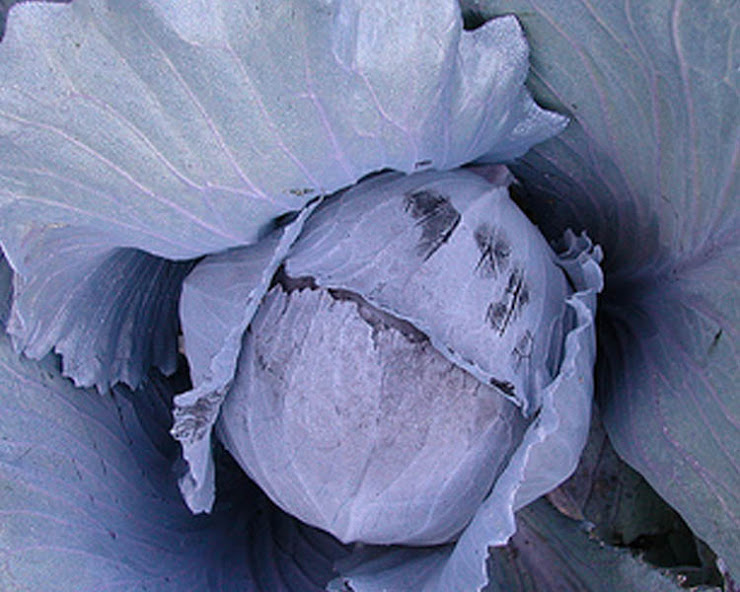Did you plant garlic last fall? Are you wondering what's happening down there when the weather is cold, the ground is frozen and covered with snow? It's simply miraculous, not to mention delicious. Garlic prefers the security of it's underground home.
Properly planted garlic is in the ground in the fall, thus giving it time to establish roots before a long winter nap. When the ground starts to thaw, that hearty little plant gets going. Often showing green shoots before anything else in the garden wakes up. There are two types of garlic (and possibly thousands of varieties!), hard and soft neck. The hard necks tend to be stronger and more vigorous and perhaps better suited to northern climates. Soft neck varieties are thought to store better and may not emerge in the spring with as much enthusiasm.
So, the plant grows and the leaves emerge and get full and beautiful. Each of those leaves indicates a layer of the papery skin that covers the bulb that is developing underground. Right through the center of those leaves a tall funny flower stem will emerge that will eventually form a curly cue flower on the end, this is called a scape. An often overlooked delicacy that your garlic plant provides.
The scape can be cut off, providing more energy to the plant to make a bigger bulb. The flavor burst from this harvest is an excellent addition to pasta, can be grilled, pickled, made into pesto or sauteed. It is not a typical "dead head", it is a harvest to be sure. A quick pickle recipe would be to throw a few whole peppercorns into a clean glass jar, along with a hot pepper perhaps and the very clean scapes (which can be cut up to better fit into the jar). Make a brine with salt, vinegar and water, bring it to a boil and fill the jar. Refrigerate for 4 weeks and you have a super treat to add to salads, soups or to eat straight from the jar.
 Back to the leaves. They are important, because they are the gardeners only indication of maturity without digging up a bulb. The general rule of thumb is wait until the bottom few leaves are dying back, this is an indication of the plant nearing the end of it's life cycle. When digging garlic, be careful, they are tender and thin skinned and can be easily damaged with a careless shovel. Remember that for the garlic plant, it's a bit like birth at this stage, so go easy with them. This is the stage where I receive many a phone call...Why is my garlic dying? It's not, it's ready!
Back to the leaves. They are important, because they are the gardeners only indication of maturity without digging up a bulb. The general rule of thumb is wait until the bottom few leaves are dying back, this is an indication of the plant nearing the end of it's life cycle. When digging garlic, be careful, they are tender and thin skinned and can be easily damaged with a careless shovel. Remember that for the garlic plant, it's a bit like birth at this stage, so go easy with them. This is the stage where I receive many a phone call...Why is my garlic dying? It's not, it's ready!Now what, you have this pile of leaves, bulbs and dirt? Garlic needs curing for a bit. It is really delicious at this stage and can be eaten, but it stores best for future use with a little "hanging out"! Simply bundle the garlic together in bunches of about 15-20 plants and hang them in an area away from direct sun and let them dry (a little breeze is great too). When the skin feels papery, trim off the tops, knock off the dirt and enjoy. It is at this point that I advise selecting those bulbs that will be held back for replanting in the fall. Chose the largest bulbs and remember that each clove will bring you a whole bulb next year.
One of the most rewarding crops in my mind, I have a fascination with it. The tenacity and simplicity the adaptability and the taste, what could be better? An ancient plant that has evolved and adapted based on human intervention and desire, what a treat! If you have never planted garlic, I suggest giving it a try. Start with organic garlic, preferably grown in your area by a reputable farmer or friend. Plant it sometime in early October, about 3-4 inches deep, pointed end of the clove goes up, cover with about 3-4 inches of mulch and wait for the show!
Happy Gardening! See you in "The Backyard"!







No comments:
Post a Comment